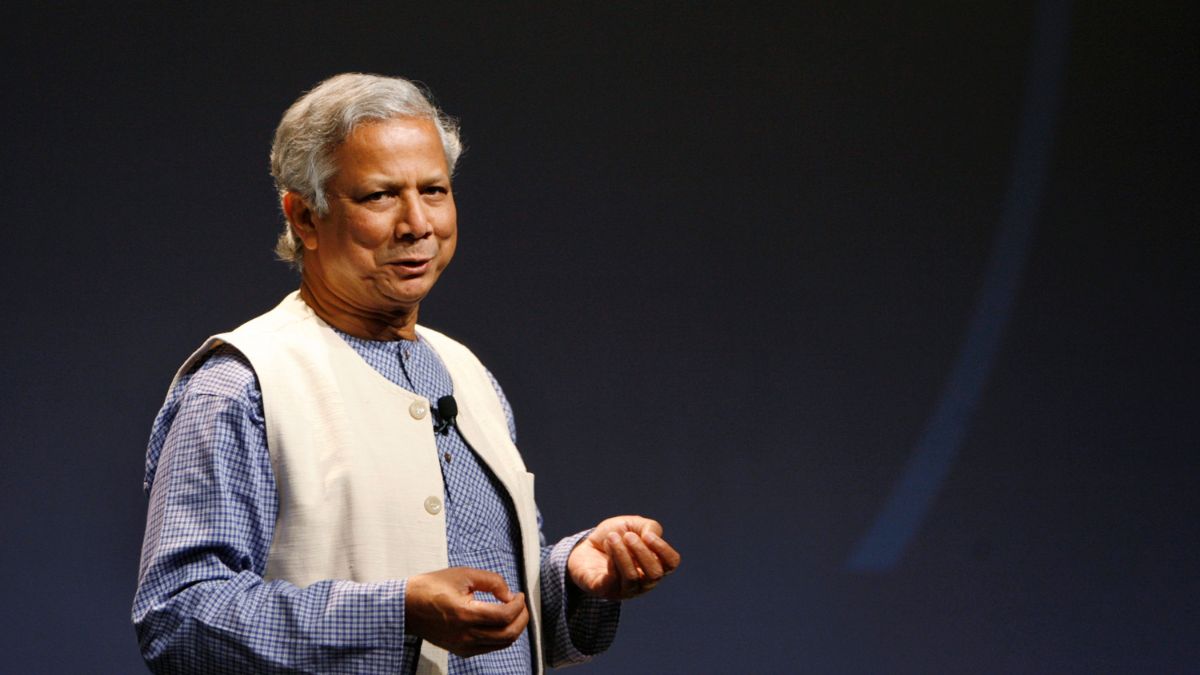Bangladesh interim government’s chief advisor Muhammad Yunus’ recent remarks in China on India’s Northeast have sparked tensions. His comments describing the Northeast as “landlocked” and Dhaka as the “only guardian of the ocean for all this region” stirred a massive row.
Since Yunus formed the interim government in Bangladesh after the fall of Sheikh Hasina’s regime last August, Dhaka has been tilting towards China and Pakistan — both India’s rivals. Amid changing ties and growing threats, New Delhi has been intensifying security in the Siliguri Corridor in West Bengal which connects the Northeast with the rest of India.
But why is this corridor so important for India? We will explain.
What did Yunus say?
During his four-day visit to China in March, Bangladesh’s interim leader, Muhammad Yunus, said India’s Northeast is “landlocked” while inviting China to boost business ties with Dhaka.
“Seven states of India, eastern part of India, called seven sisters… they are landlocked country, landlocked region of India. They have no way to reach out to the ocean,” he said.
“We are the only guardian of the ocean for all this region. So this opens up a huge possibility. So this could be an extension of the Chinese economy. Build things, produce things, market things, bring things to China, bring it out to the whole rest of the world,” the Bangladesh leader added.
His comments triggered a controversy in India, with leaders from the northeast rebuking Yunus.
Assam Chief Minister Himanta Biswa Sarma called his remarks “offensive,” saying they “underscore the persistent vulnerability narrative associated with India’s strategic ‘Chicken’s Neck’ corridor.”
The Siliguri Corridor in North Bengal is also known as Chicken’s Neck.
Sarma also suggested scaling up infrastructure in the region, by developing “robust railway and road networks both underneath and around the Chicken’s Neck corridor.”
Why is ‘Chicken’s Neck’ crucial?
The Siliguri Corridor is a 22 km stretch of land connecting the Northeastern states of Assam, Arunachal Pradesh, Manipur, Meghalaya, Nagaland, Mizoram, Tripura and Sikkim to the rest of India. The narrow strip has Nepal and Bhutan to its north and Bangladesh to its south.
The Chicken’s Neck also links India with its neighbours Tibet, Nepal, Bhutan, and Bangladesh.
All land trade between Northeast India and the rest of the country travels through the Siliguri corridor. There is just a single railway line to carry freight across the Siliguri Corridor.
Any blockage on this strip will cut off the Northeast from the rest of India.
The narrow strip of land also becomes vulnerable given the topography of the region which makes railways and roads vulnerable to landslides and natural disasters.
India has been trying to reduce reliance on the Siliguri Corridor by exploring alternative routes connecting the Northeastern states via Nepal and Bangladesh.
How India is boosting security at Chicken’s Neck
The vulnerability of the Chicken’s Neck was highlighted during the 2017 standoff between Indian and Chinese troops over the Doklam plateau. If Beijing had built a road in Doklam, which India considers an undisputed territory of Bhutan, it would have compromised the Siliguri Corridor. However, India successfully resisted China’s attempt.
Since then, New Delhi has been ramping up defence infrastructure and preparedness in the region.
After the 1962 war with China, defence experts warned that Beijing could choke the Siliguri Corridor and isolate Northeast from mainland India. Realising this, India has enhanced security by deploying more forces, including the Border Security Force, Sashastra Seema Bal, and Indo-Tibetan Border Police, in the region.
Bangladesh’s leader Yunus’ remarks on the Northeast once again put the spotlight on the strategic importance of the Chicken’s Neck for India. While India and Bangladesh’s diplomatic relationship has been frayed since Hasina’s ouster, China has been making overtures to Dhaka.
Yunus is showing Dhaka’s shift towards Beijing through his statements and actions. China’s expanding presence in Bangladesh through the Belt and Road Initiative (BRI) is also a concern for India. China’s reported plan to build an airfield in Bangladesh’s Lalmonirhat district will be a security threat for India along the eastern border, including the Chicken’s Neck.
“That the Northeast is landlocked is not in doubt. But Yunus’ vision of making the region an extension of the Chinese economy is dangerous. China is certainly not friendly towards India and its plan to build dams across the border could be a recipe for disaster for the Northeast. So, a greater role and presence of China in Bangladesh will not be favourable to India,” Rajeev Bhattacharyya, a writer and journalist based in Guwahati, told Deccan Herald.
Amid rising security challenges and increased China-Bangladesh bonhomie, India is fortifying the Siliguri Corridor. New Delhi has deployed the Russia-made advanced S-400 Triumf air defence system in the narrow strip to protect it from potential aerial attacks.
India has also stationed a squadron of advanced Rafale fighter jets at the Hashimara Airbase, which is close to the Siliguri region. BrahMos missiles, MRSAM and Akash air defence systems are also securing the region.
The Indian Army’s Trishakti Corps, headquartered at Sukna near the corridor, conducts regular military drills in the region.
With Bangladesh moving closer to China, India has to remain vigilant and strengthen the security of its vulnerable Chicken’s Neck.
With inputs from agencies


)
)
)
)
)
)
)
)
)



